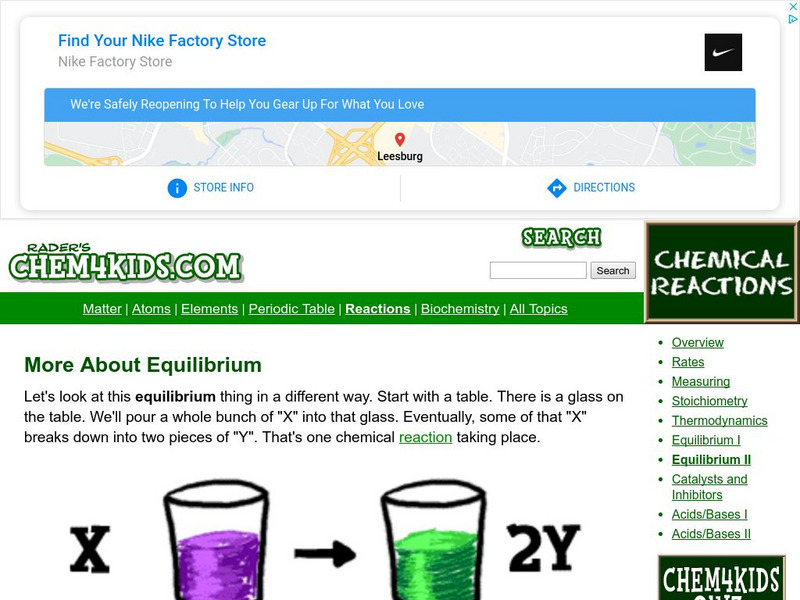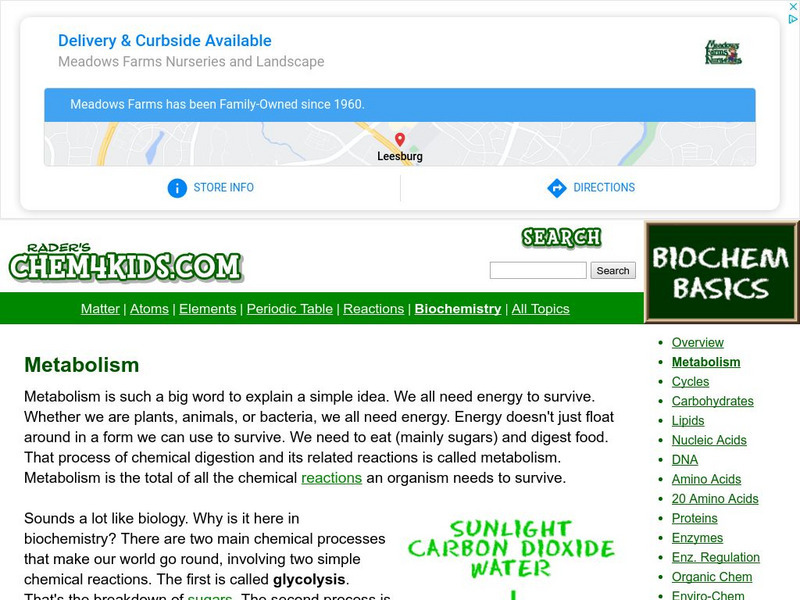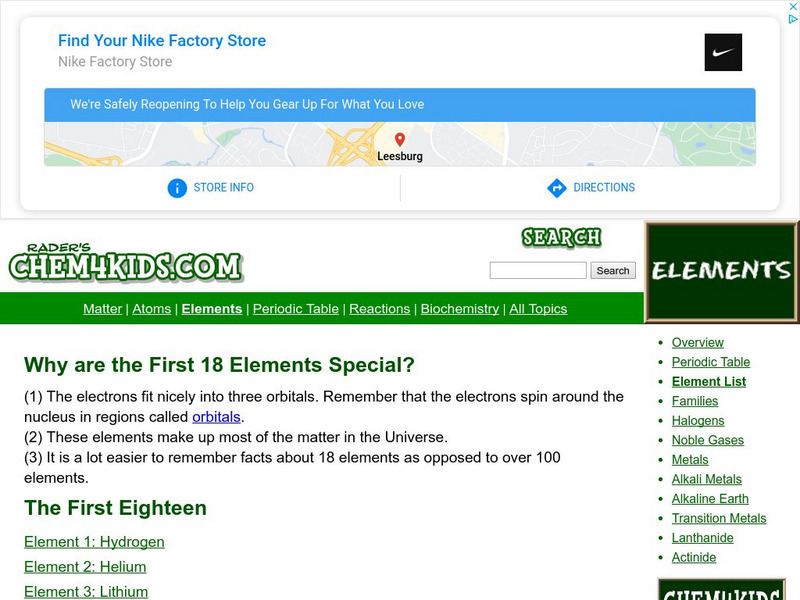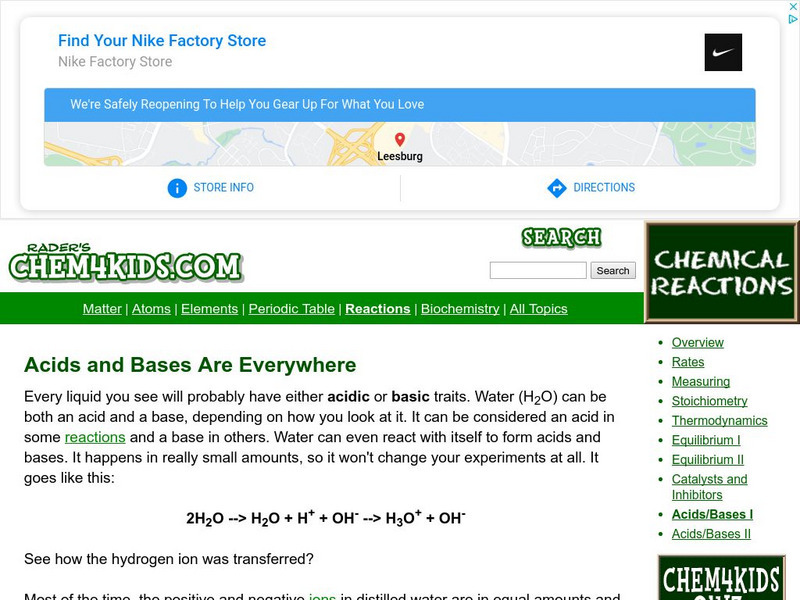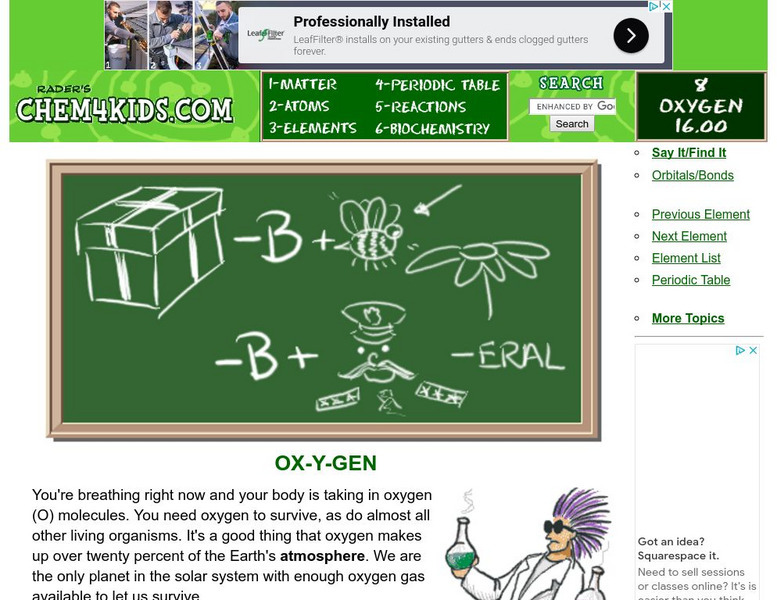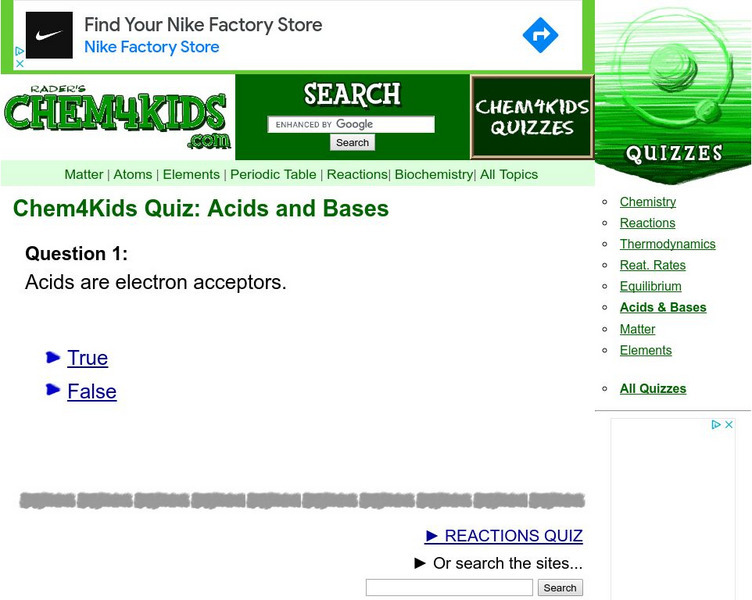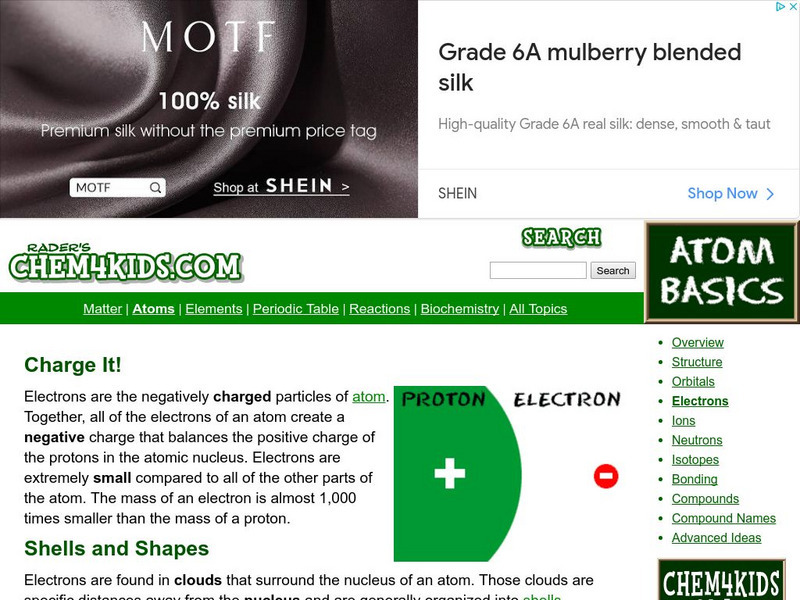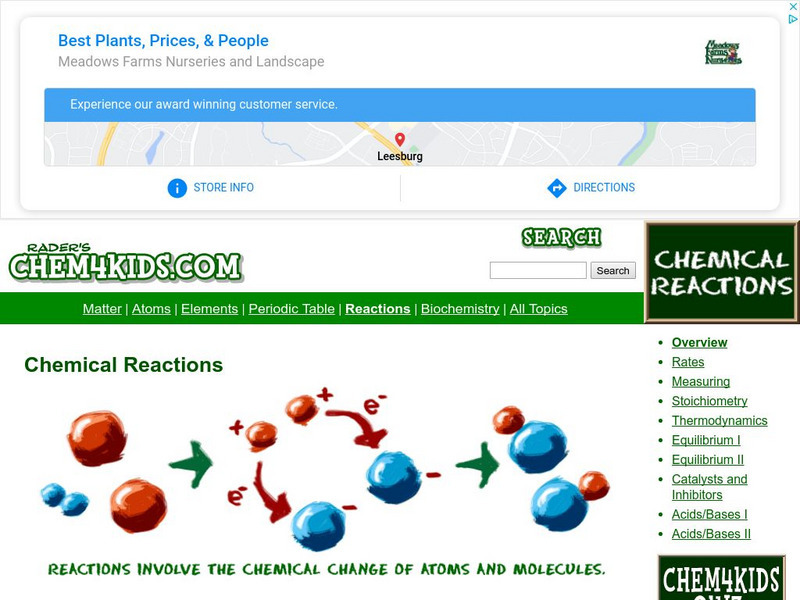Chem4kids
Chem4 Kids: Families Stick Together
Beyond columns and rows, the periodic table groups elements according to families. Identify the families present on the table with this overview.
Chem4kids
Chem4 Kids: The Noble Gases
Get the skinny on the noble gases on the periodic table. Find out why this family is happy, how well they bond, and exactly who is a part of this happy family.
Chem4kids
Chem4 Kids: Alkali Metals to the Left
To the left. To the left. The elements in the left column of the period table are alkali metals with the exception of hydrogen. This is a brief overview of the alkali metals, what their family is all about and how well they bond or do...
Chem4kids
Chem4 Kids: Heading to Group Two
The second family in the periodic table is the alkaline earth metals found in the second column from the left. Meet the family and get to familiar with why this is the second most reactive group of elements.
Chem4kids
Chem4 Kids: More About Equilibrium
Equilibrium in chemistry is two reactants combining together and then coming apart to their two parts. Review this resource featuring a way to approach chemical equilibrium.
Chem4kids
Chem4 Kids: Reactions: Names to Know
Acids and bases are scaled. These facts are good knowledge to have when classifying solutions as acidic, basic, or neutral.
Chem4kids
Chem4 Kids: Metabolism
Understand the science of metabolism with this simplified definition.
Chem4kids
Chem4 Kids: Cycles Around You
There are many cycles occurring in all of the Earth's organisms, including the Earth itself. This brief page highlights some of those cycles, making readers aware of how many cycles there are, big and small.
Chem4kids
Chem4 Kids: Dna Details
Check out this concise explanation of DNA. All organisms have DNA.
Chem4kids
Chem4 Kids: Proteins
Here you can find some great information about proteins. Learn about a protein's primary structure, secondary structure, tertiary structure, and quaternary structure.
Chem4kids
Chem4 Kids: Periodic Table and the Elements
Students can use this resource to interact with the periodic table. Information is available for each element. This is a good source of information for younger students.
Chem4kids
Chem4 Kids: Element List
Site provides the first 18 elements found in the Periodic Table. Click on an element to discover where it is found and what it's characteristics are.
Chem4kids
Chem4 Kids: Acids & Bases
This Chem4Kids site provides a general overview of acids and bases, and their use in chemistry. Content focuses on "names to know" and how acids and bases work.
Chem4kids
Chem4 Kids: Elements as Building Blocks
Review the purpose of the periodic table and how it is designed.
Chem4kids
Chem4 Kids: Lithium
Here at Chem4Kids you can find some great information about the third element in the periodic table, lithium. Content focuses on lithium's electrons, where you can find lithium in nature, and how it bonds with other elements (or with...
Chem4kids
Chem4 Kids: Oxygen (O)
Here you can find some great information about the 8th element in the periodic table, "oxygen." Content focuses on oxygen's electrons, where you can find oxygen in nature and in the home, and how oxygen combines with other elements.
Chem4kids
Chem4 Kids: Quiz: Acids and Bases
A quiz testing your knowledge of acids and bases. Quiz gives immediate feedback on whether your answer was right or wrong with an explanation.
Chem4kids
Chem4 Kids: Matter: Evaporation
An explanation about the process of evaporation and the conditions needed to complete this process.
Chem4kids
Chem4 Kids: Atoms: Bonding
The website provides a basic explanation of why and how atoms bond together through a covalent bond. Examples with pictures given.
Chem4kids
Chem4 Kids: Atoms: Electrons
Learn about an electron's negative charge, location, and role in bonding. Website also investigates electrons uses in electricity.
Chem4kids
Chem4 Kids: Atoms: Neutrons
Students will find an explanation of the neutron particle located inside the atom's nucleus. Website also defines isotopes and the process of radioactive decay.
Chem4kids
Chem4 Kids: Atoms: Orbitals
The website provides an explanation of the electrons' position in their orbitals as they spin around the nucleus. Quantum theory is also explored by explaining that the exact location of a specific electron is a not exact but a guess.
Chem4kids
Chem4 Kids: Reactions
This site provides a detailed overview of chemical reactions. Content explores what a reaction is, as well as different types of reactions, reaction rates, how to measure compounds to create a reaction, and "stuff" you can add to a...






